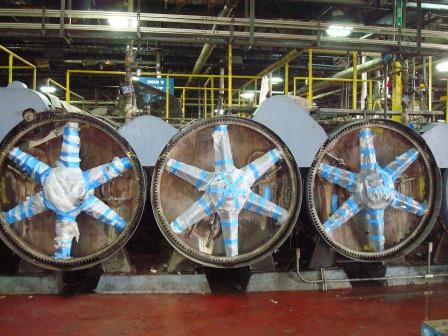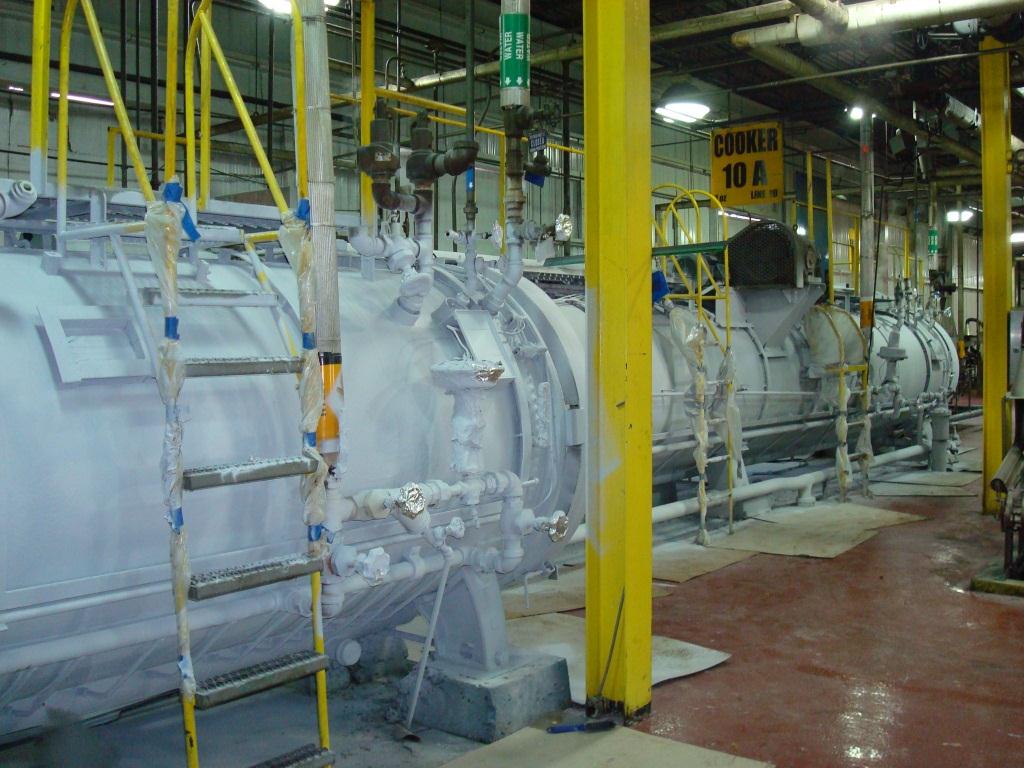Every contractor has been on the see-saw: the high wire balancing act between getting the work (aka business development) and completing the work (aka generating the revenue). The often overlooked cost or value is the ability to get to the right person in order to make your pitch, and more importantly, once you get to the right person, making the differentiation between you and your company to other contractors, vendors, and suppliers.
By choosing the right product for the specific project, you can leverage the relationships and uniqueness of your contracting company as a solution provider rather than a me-too coating applicator.
Finding Unique Products
One type of coating system that can create coating projects that didn’t exist is Thermal Insulation Coatings, or TICs. Thermal Insulation Coatings have a broad range of use: they can actually reduce temperatures across the medium in either direction. That is, they can actually keep heat in like insulation. These applications include uses in marine, automotive, industrial, and commercial fields.
Some characteristics of Thermal Insulation Coatings are that they:
1. Can be any color,
2. Work on multiple methods of thermal dynamics, including conduction, convection, radiation, and reflection,
3. Are generally hi-build (60–200 mils, or 1,524–5,080 microns),
4. Do not generally handle extended ponding well,
5. Do not need exterior exposure, only a temperature differential across the substrate,
6. Are not affected by cleanliness for performance,
7. Have a gloss level that remains flat over time, with good color retention with regard to the sheen,
8. Can be used on either side of the substrate.
Some limitations of the TIC materials are that they:
1. Require multiple coat passes to obtain film thickness,
2. Need ambient and surface temperature above 45° F (7° C) to cure,
3. Are affected by application method with regard to performance, with strong preference for spray application,
4. Do not handle immersion or underground applications.
Using derivatives of ceramic materials, these types of natural insulation particulates offer outstanding abilities in a coating type format. To appreciate how these coatings can produce the same temperature differentials as conventional insulation, it is necessary to understand that today’s true TICs are not simply reflective coatings but instead employ all five thermal dynamic blocking agents (or principles) to their advantage instead of just one, like conventional types of insulation. TICs are truly different in that they actually reflect, absorb, transport, and dissipate the heat before it ever leaves the coating.
The definition of a true thermal insulating coating is one that produces temperature differentials across its surface (i.e., to the heat/cold source or inside or outside). The industry is in the process of providing clear definitions of each type of material to make specification of the materials easier.
The best way to illustrate the difference is by a real-world example. The following is a case history, which succeeded in saving the customer over $280,000 per year in energy costs, easily paying for the retrofit for the coating.
TICs at a Packaged Foods Company
In November 2008, an application of a TIC was started at a Midwest packaged foods company. The coating was applied to retort carbon steel cookers, which cook foods to be packaged and distributed. The reason for the installation of the TIC was that the cookers had an unusual configuration and geometry that made conventional “battery” type insulation very difficult to install and maintain. Prior to the coating, only 40 percent of the cookers’ surface areas could be insulated. The applicator, Complete Industrial Insulation of Jordan, N.Y., had only a five-day window to complete the installation on 32 cookers.
 With such a short time window for the work to be completed, the crew started application of the TIC onto the 2,400 square feet (223 m²) of substrate. One reason the TIC was chosen as opposed to other insulating options was because this material could be applied while the cookers were in service, which maximized production. The coating, which reflects heat back into the cookers, reduces energy requirements along with the surface temperature of the cookers. Running at 270° F (132° C) to properly cook the food, enhancing personnel protection efforts in the facility was crucial. Heat would escape through non-insulated areas, making the environment extremely uncomfortable and energy inefficient.
With such a short time window for the work to be completed, the crew started application of the TIC onto the 2,400 square feet (223 m²) of substrate. One reason the TIC was chosen as opposed to other insulating options was because this material could be applied while the cookers were in service, which maximized production. The coating, which reflects heat back into the cookers, reduces energy requirements along with the surface temperature of the cookers. Running at 270° F (132° C) to properly cook the food, enhancing personnel protection efforts in the facility was crucial. Heat would escape through non-insulated areas, making the environment extremely uncomfortable and energy inefficient.
Another benefit of using this TIC was that it met current U.S. Department of Agriculture (USDA)/Food & Drug Administration (FDA) requirements for specifying a low-volatile organic compound (VOC) product in the cooking area.
 The crew worked to insulate the retort carbon steel cookers, which were each approximately 5-feet (1.5 m) in diameter and 40-feet (12 m) long. They rotate inside a cylinder and were beginning to show age in the form of rust on the exterior. To start the project, the crew removed old insulation from four of the cookers. They were then prepared and cleaned using degreasers and a high-pressure washer.
The crew worked to insulate the retort carbon steel cookers, which were each approximately 5-feet (1.5 m) in diameter and 40-feet (12 m) long. They rotate inside a cylinder and were beginning to show age in the form of rust on the exterior. To start the project, the crew removed old insulation from four of the cookers. They were then prepared and cleaned using degreasers and a high-pressure washer.
The 10-man crew applied the coating. They applied the first layer at 20 mils (0.5 mm) with a Graco Spray Unit and a tip size of 421. There were no overspray issues with surrounding equipment as the product only has a three-foot (1 m) dry fall area. The coating was then allowed to set for an hour while the contractor started on another cooker. Employees on hand noticed a temperature difference after the first coat. Six more layers were applied at 20 mils (0.5 mm) each to reach a total thickness of 140 mils (3.5 mm).
The company’s cookers experienced much success with the application. The cookers’ shell temperature went from 270° F (132° C) to 128.7° F (54° C). And based upon the current cost of natural gas, the company will save approximately $280,000 per year with TICs installed on 32 cookers.
Unlike conventional insulation, once TIC is applied, the surface of the substrate remains protected and cleaned; there is no need for follow-up maintenance. For this contracting firm, finding the right coating for this particular project was the key to success. Take a tip from Complete Industrial Insulation: solving more problems for the same customers positions your contracting company as a solution provider, not just a coating applicator.
